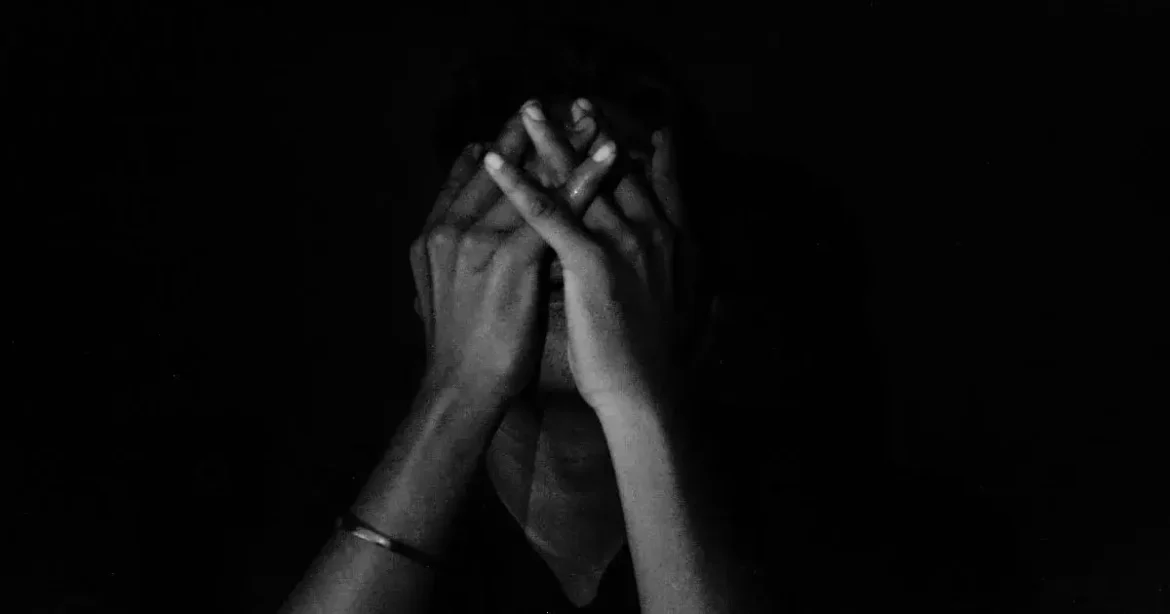In BDSM, the intensity of scenes can bring deep emotional highs, but what happens when those highs are followed by a sudden low? This post-scene experience, known as drop—or subdrop for submissives—can feel like an emotional crash, leaving both submissives and Dominants feeling depleted, vulnerable, or even isolated. Though it’s common, drop isn’t often discussed openly, leaving many to wonder why it happens and how to handle it effectively.
Dealing with drop in BDSM requires understanding that this emotional shift is natural. For submissives, subdrop might manifest as feelings of sadness or physical exhaustion, while Dominants can experience their own version, sometimes called Dom drop. Both types of drop stem from the energy exchange and vulnerability that scenes involve, and recognizing these reactions is the first step toward managing them with compassion and care.
In this post, we’ll explore what drop looks like for both submissives and Dominants, why it occurs, and practical coping strategies to help navigate these post-scene lows. Whether you’re experiencing subdrop, Dom drop, or supporting a partner through it, these tools can help create a smoother, more supportive transition back to everyday life after intense scenes and make dealing with drop in BDSM an easier experience.
What is Drop in BDSM?
Drop, sometimes referred to as subdrop for submissives and Dom drop for Dominants, is the emotional and physical crash that can follow an intense BDSM scene. During a scene, participants often experience heightened sensations, adrenaline, and strong emotional connections, which contribute to a “high” that can feel incredibly fulfilling. When the scene ends and those chemical and emotional highs fade, drop can set in. Dealing with drop in BDSM can be a challenging experience.
For submissives, subdrop might feel like a sudden wave of sadness, fatigue, or even self-doubt. Physical symptoms can include exhaustion, chills, or even muscle soreness. Dominants, too, experience their own form of drop, which may involve feelings of guilt, emptiness, or an unexpected need for reassurance. Just as with subdrop, Dom drop is a result of the emotional and physical energy they invest during scenes, paired with the responsibility of holding space for their partner.
Recognizing that drop is a natural response to intense connection and stimulation is important. It’s not a sign of failure or something to avoid; rather, it’s part of the cycle of energy exchange in BDSM. Learning how to handle drop with awareness and compassion allows both Dominants and submissives to come down safely, protecting their emotional well-being and reinforcing trust within their dynamic. Dealing with drop in BDSM can be an opportunity for growth and connection.
In the next sections, we’ll explore practical ways for submissives to cope with subdrop and for Dominants to navigate their own version of drop, so both partners feel supported and nurtured after scenes, making for a healthier way of dealing with drop in BDSM.
Coping Strategies for Subdrop
For submissives, subdrop can feel overwhelming, as the intense emotions and physical sensations experienced during a scene begin to dissipate. Dealing with drop in BDSM, specifically subdrop, involves both preparation and self-care, allowing submissives to ground themselves and reconnect with their emotional and physical needs. Here are some practical ways of dealing with drop in BDSM and supporting recovery:
1. Practice Aftercare with Intention When Dealing with Drop in BDSM
Aftercare is essential for managing subdrop. Once the scene ends, take time to transition with your partner’s support. Aftercare can involve cuddling, soothing touch, a favorite blanket, or even quiet time together. Open communication is key—share with your Dominant what feels most comforting, whether it’s staying close, sitting in silence, or talking about your experience. These moments create a sense of safety and help regulate emotions as you come down from the scene.
2. Stay Hydrated and Nourished
Intense scenes can take a physical toll, and maintaining hydration and nutrition is important for recovery. Drinking water and eating a nutritious snack can help restore energy levels and prevent fatigue. Gentle, comforting foods can also provide a grounding effect, signaling to the body that it’s time to relax and restore balance.
3. Ground Yourself with Sensory Tools
Sensory grounding techniques, such as holding a weighted blanket, using calming scents, or practicing deep breathing exercises, can help bring you back to the present moment. Fidget toys, textured fabrics, or even soft music can provide gentle sensory stimulation, helping to alleviate feelings of disorientation or emotional vulnerability.
4. Reach Out for Support
It can be reassuring to connect with a partner, friend, or fellow kink community member when experiencing subdrop. Sharing your feelings with someone who understands can provide comfort and validation. If you’re processing intense emotions, consider talking it out with someone you trust. Online kink communities and support groups can also be valuable for connecting with others who have experienced subdrop.
5. Give Yourself Time to Rest and Reflect
Subdrop doesn’t always go away immediately, and it’s okay to take additional time to process. Allow yourself to rest, journal about your experience, or spend some quiet time alone. Reflecting on the scene and how you’re feeling afterward can be helpful for understanding your needs and preparing for future experiences.
Coping Strategies for Dom Drop
Just as submissives experience subdrop, Dominants can feel their own version of drop after a scene. Known as Dom drop, this post-scene experience can bring feelings of guilt, emptiness, or exhaustion, as the physical and emotional energy invested during the scene starts to fade. Dealing with drop in BDSM as a Dominant requires taking time to care for yourself after a scene. It is crucial for staying balanced, grounded, and ready for future play. Here are some effective ways for Dominants to manage Dom drop:
1. Engage in Aftercare for Yourself
While aftercare is often focused on submissives, Dominants benefit greatly from their own aftercare. This might involve a quiet moment to breathe and relax, holding hands with your partner, or simply decompressing in a calm environment. Communicate your aftercare needs to your submissive so they can support you, creating a shared experience of coming down together and reinforcing connection. This is especially important when dealing with drop in BDSM.
2. Debrief with Your Partner
Debriefing with your partner can be a powerful tool for managing Dom drop. Take time to discuss what went well in the scene, any feelings that arose, and areas where you might want to adjust in future play. Open communication helps you process emotions and gain reassurance, and it gives your partner a chance to share their perspective. A meaningful debrief can strengthen trust and understanding between you, easing the emotional weight of Dom drop.
3. Practice Mindfulness or Relaxation Techniques
Scenes require focus and control, and letting go of that intensity can feel jarring. Practicing mindfulness, meditation, or deep breathing exercises can help you release tension and recenters you in the present. Simple activities like progressive muscle relaxation, listening to calming music, or a few minutes of meditation allow you to reset emotionally and physically.
4. Reflect on Positive Reinforcement
Feelings of guilt or self-doubt can sometimes accompany Dom drop. Remind yourself of the positive aspects of the scene—what you and your partner enjoyed, the connection you created, and the pleasure shared. If you tend to be hard on yourself, journaling about the scene’s successes or reading affirmations can help counter negative thoughts, allowing you to view the experience in a balanced way.
5. Reconnect with Outside Support Networks
Having a support system outside of your play partner can make a big difference when dealing with Dom drop. Consider reaching out to friends or other Dominants within the kink community for connection and validation. Sometimes sharing your feelings with someone who understands can offer clarity and help normalize the experience of Dom drop.
6. Allow Yourself Time to Recharge
Dom drop may take time to process, so give yourself permission to rest, relax, and recharge. Take time to engage in activities that help you unwind, whether it’s reading, exercising, or simply taking a nap. Your energy levels and emotional state may need time to return to equilibrium after an intense scene, and allowing that time supports overall well-being.
Supporting Each Other Through Drop
Both submissives and Dominants can experience drop, and supporting each other through it strengthens trust and connection. Mutual care allows each partner to feel seen, respected, and valued, making drop a shared experience rather than an individual struggle. Here are some ways partners can support each other:
1. Openly Communicate After the Scene
Communication is essential. Take time to check in with each other, openly sharing feelings, thoughts, and needs. Asking simple questions like “How are you feeling?” or “What can I do for you right now?” can provide reassurance and create a safe space to process together. Mutual honesty and empathy go a long way in managing the emotional intensity of drop.
2. Offer and Accept Aftercare Freely
Both partners may have aftercare needs, so creating a space where aftercare is shared helps each person feel cared for. This could mean taking turns holding each other, offering words of encouragement, or simply sitting quietly together. Recognizing that Dominants also need aftercare can help shift traditional assumptions, making aftercare a more inclusive, balanced experience.
3. Respect Each Partner’s Unique Needs
Each person experiences drop differently, and what works for one may not work for the other. Some may prefer quiet alone time, while others need physical reassurance or verbal affirmations. By honoring each other’s individual preferences, you both contribute to a supportive atmosphere. If a partner needs space, reassure them that it’s okay, and schedule a time to reconnect later.
4. Check In Later
Drop doesn’t always hit immediately—it can set in hours or even days after a scene. Following up with a text, phone call, or in-person check-in a day or two later helps each partner feel remembered and cared for. These later check-ins also offer a chance to address any emotions that may have surfaced and to strengthen your bond through continued support.
5. Discuss and Adjust Aftercare Plans
After each scene, discuss what worked well in terms of aftercare and what could be improved. Did a particular approach help ease subdrop or Dom drop? Was there something missing? These conversations allow you to adjust future aftercare plans so they’re better tailored to each person’s evolving needs, ensuring that each scene’s transition feels smoother and more supportive.
Conclusion: Embracing Aftercare and Self-Care for Drop in BDSM
Experiencing drop—whether as a submissive or Dominant—is a natural response to the emotional and physical intensity of BDSM play. Recognizing and preparing for drop, with both self-care and mutual support, helps create a more fulfilling and balanced dynamic. By addressing subdrop and Dom drop with understanding and proactive care, both partners can feel validated, supported, and connected through every stage of their play.
Drop isn’t something to fear or avoid; it’s a reminder of the deep energy exchange involved in BDSM. Embracing aftercare and openly discussing individual needs strengthens trust, builds resilience, and honors each person’s unique experience. Whether it’s offering each other comfort right after a scene or checking in days later, these thoughtful acts of support reinforce the bond between Dominant and submissive, creating a safe foundation for continued exploration.
For anyone navigating the complexities of BDSM, remember that taking time for self-care and aftercare isn’t just beneficial—it’s essential. By building these practices into your routine, you cultivate a more mindful, compassionate approach to BDSM that fosters growth, intimacy, and mutual respect.




2 Comments
Thanks for another great post. Where else could anyone get that kind of info in such an ideal way of writing? I’ve a presentation next week, and I’m on the look for such information.
Thank you for your kind words! I welcome the use of my content with proper attribution.